A suntan may seem like a good way to hide dark circles under the eyes and bring out a white, flashy smile. However, as soon as beach season is over, the consequences of a suntan start to show - brown spots, discoloration, and new wrinkles around the eyes and mouth. After years of tanning, the skin starts to show signs of premature aging.
Instead of tanning as a short-lived beauty solution, treat your skin with care for the best long-term results. That includes using sunscreen, especially during the summer.
In this article, we teach you how to choose sunscreen and recommend quality products to protect your skin.
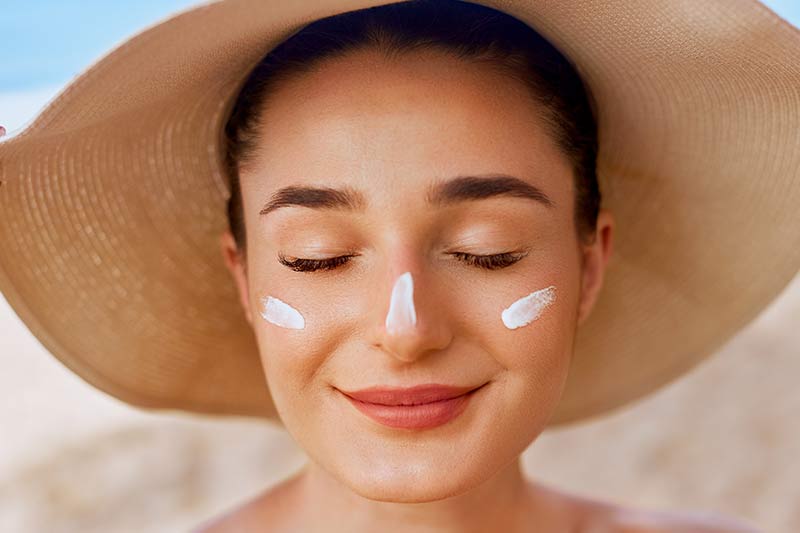
How to Choose Sunscreen?
Dermatologists agree that sunscreen is the most important product in your summer skincare routine because the sun’s UV rays damage and destroy skin cells. Sunscreen not only helps prevent burning but also protects from premature aging and skin cancer.
However, not all sunscreens provide equal protection. Consider the following factors when choosing your sunscreen product.
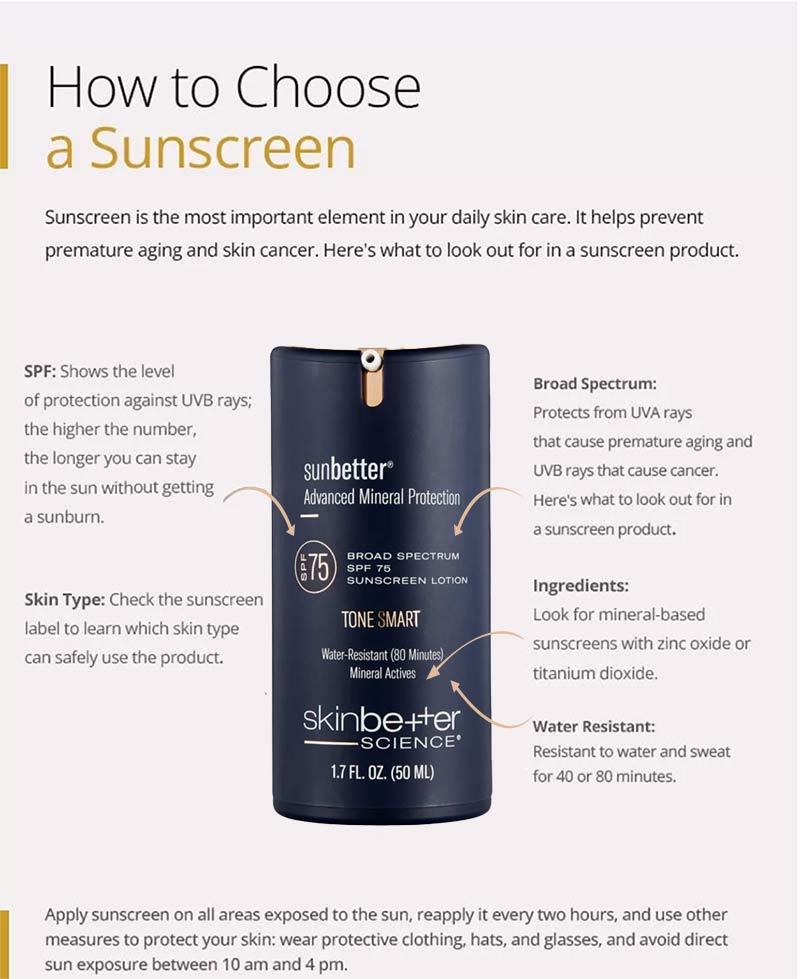
1. Consider Your Skin Type
Check the sunscreen label to learn which skin type can safely use the product.
If you have oily, acne-prone skin, use sunscreen products labeled “non-comedogenic” because they don’t clog pores and cause acne. The best sunscreens for oily and combination skin are lightweight and easily absorbed.
People with sensitive skin should use mineral-based sunscreens with zinc oxide or titanium dioxide because they don’t cause irritation.
If you have dry skin, look for a sunscreen moisturizer with humectants like hyaluronic acid, ceramides, glycerin, cucumber, or urea.
Note: Find out what is the best skin care routine for dry skin.
Total Defense + Repair by SkinMedica is a blend of agents that hydrate the skin, protect it from the sun, and fight off aging signs with potent antioxidants. It contains:
- Zinc oxide and titanium dioxide for a powerful mineral sun protection,
- Squalane, glycerin, and green tea to moisturize the skin,
- Niacinamide to reduce inflammation.
This broad-spectrum SPF 34 sunscreen is suitable for all skin types.
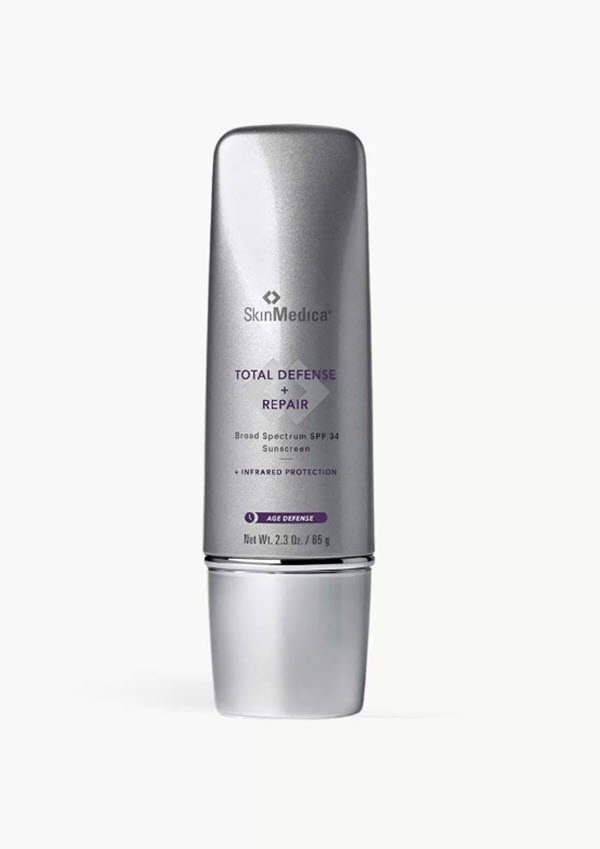
2. Choose a Broad-Spectrum Sunscreen
The sun emits two types of ultraviolet (UV) radiation with different wavelengths. The shorter wavelength sunrays are called UVB, and they are the primary cause of skin cancer. The longer wavelengths are called UVA, and they primarily cause wrinkles, brown spots, and loss of skin elasticity. To ensure your sunscreen protects you from both types of UV rays, use products that are labeled “broad spectrum.”
We recommend ZO Skin Health Broad Spectrum Sunscreen because of its advanced ZOX¹²® complex formulated with powerful antioxidants, vitamins C, A, and E. They help block infrared rays and free radicals, while titanium dioxide and zinc oxide protect against UVA and UVB rays. Bisabolol and beta-glucan help soothe redness and inflammation. The lightweight, mineral formulation is suitable for all skin types, especially sensitive and post-procedure skin.
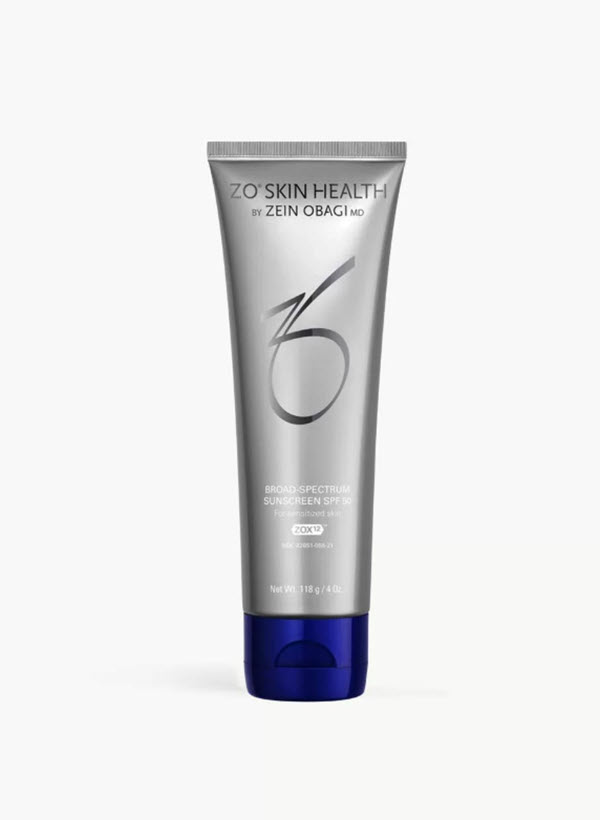
3. Use a 30+ SPF (Sun Protection Factor)
We often use the term SPF as a synonym for sunscreen. The sun protection factor (SPF) shows the level of protection against UVB (skin cancer-causing) rays. The higher the number, the longer you can stay in the sun without getting sunburned.
Dermatologists recommend using products with an SPF of at least 30. They also urge people to limit exposure to direct sunlight even when using SPF because no product can fully protect the skin. It’s also important to reapply sunscreen every two hours when exposed to direct sunlight.
SilkShield All Mineral Sunscreen by Alastin is a gentle formula suitable for all skin types, even children’s skin. It offers a broad-spectrum, chemical-free SPF-30 shield from the sun and water-resistant protection for 40 minutes. It also includes a unique blend of peptides and other ingredients that help make new collagen and elastin and reduce aging signs caused by free radicals.
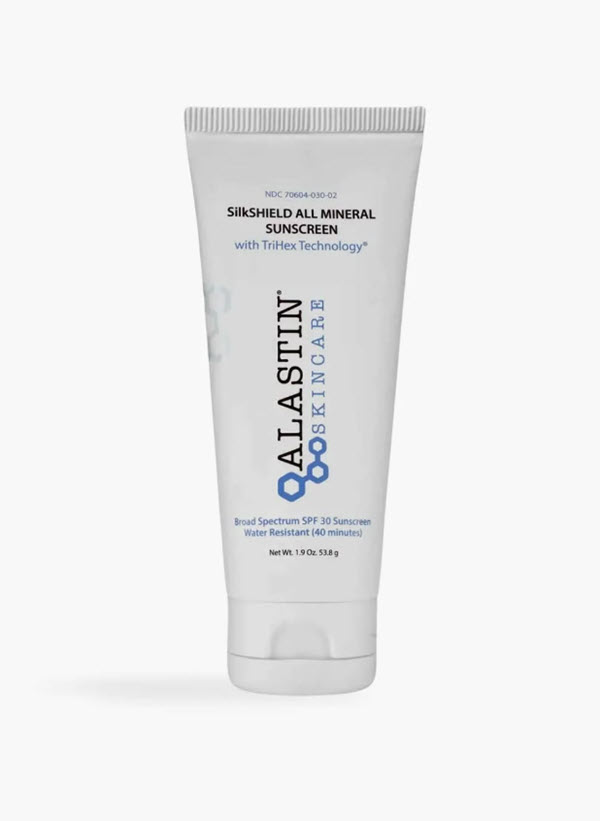
4. Choose Mineral-Based Products
Products with zinc oxide and/or titanium dioxide are called physical sunscreens because they deflect the sun’s rays. Physical sunscreens provide broad-spectrum protection, which means they protect against both types of UV rays (UVA+UVB). Most products that contain zinc oxide or titanium dioxide are mineral-based and don’t contain chemicals that irritate the skin.
On the other hand, chemical sunscreens absorb UV rays, turn them into heat, and release them from the body. They include ingredients such as oxybenzone, octisalate, octinoxate, etc. They provide broad-spectrum protection, depending on their formula. They are easier to apply and often provide more water resistance than mineral-based sunscreens.
HydraTint Pro Mineral by Alastin is a mineral-based sunscreen that provides broad-spectrum, water-resistant protection from the sun. The universal tint in the product brings a soft glow to the skin, making it suitable for use as a makeup primer. Its lightweight composition also makes it ideal for daily use.
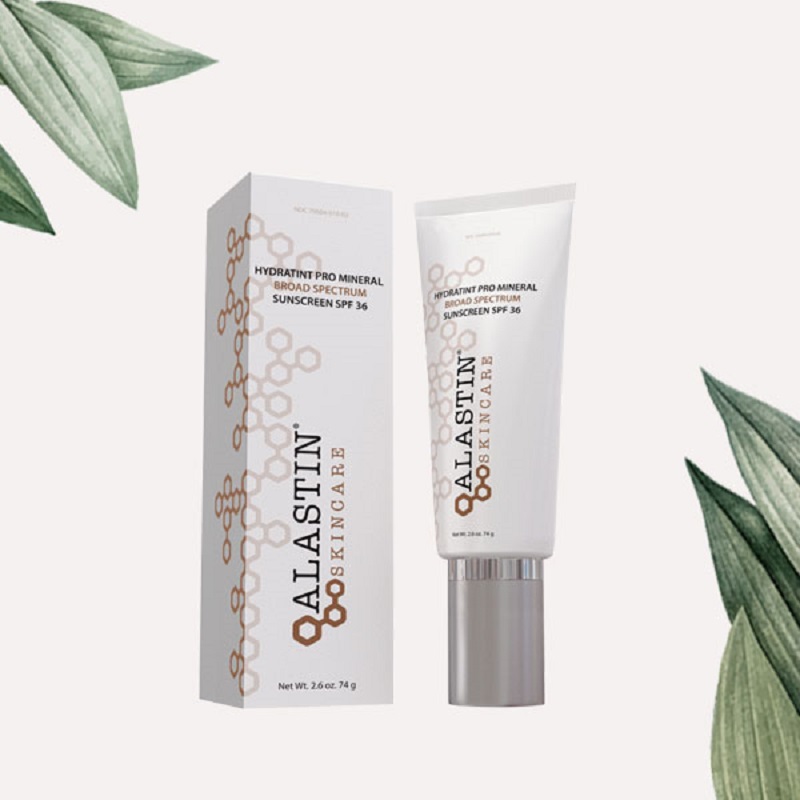
5. Avoid Harsh Ingredients
The purpose of sunscreen is to protect the skin from the sun’s harmful effects. However, some sunscreens can also cause damage. Learn how to read labels and determine how the listed ingredients may affect your skin (and the environment).
Though often used in sunscreen products because of their sun-blocking effects and ease of application, some chemical ingredients are hazardous to ocean animals and coral reefs. Sunscreens labeled as “ocean-safe” or “reef-friendly” are free of these ingredients.
Some chemical ingredients are also known to cause skin allergies and irritations, including contact dermatitis, and they have been linked to hormonal disruptions. These ingredients include oxybenzone, octinoxate, avobenzone, and homosalate.
Fragrances may also cause skin irritations. They are usually listed on the ingredient list as “fragrance,” “perfume,” or “parfum,” and may contain synthetic and natural scents. It is not mandatory to list the specific chemicals and plants used for a fragrance, so it’s best to use skincare products labeled “fragrance-free” or “unscented”.
If you have oily skin, avoid ingredients that clog pores, such as natural oils (coconut, avocado, olive, jojoba) and butters (coconut, shea).
Sunbetter Sheer by Skinbetter Science is a lightweight, allergen-free, 100% mineral sunscreen with zinc oxide and titanium dioxide. It also contains vitamin E to protect the skin from free radicals and ginger root extract, which improves circulation and provides a toning effect. It’s a broad-spectrum, SPF 56, and water-resistant sunscreen in stick form.
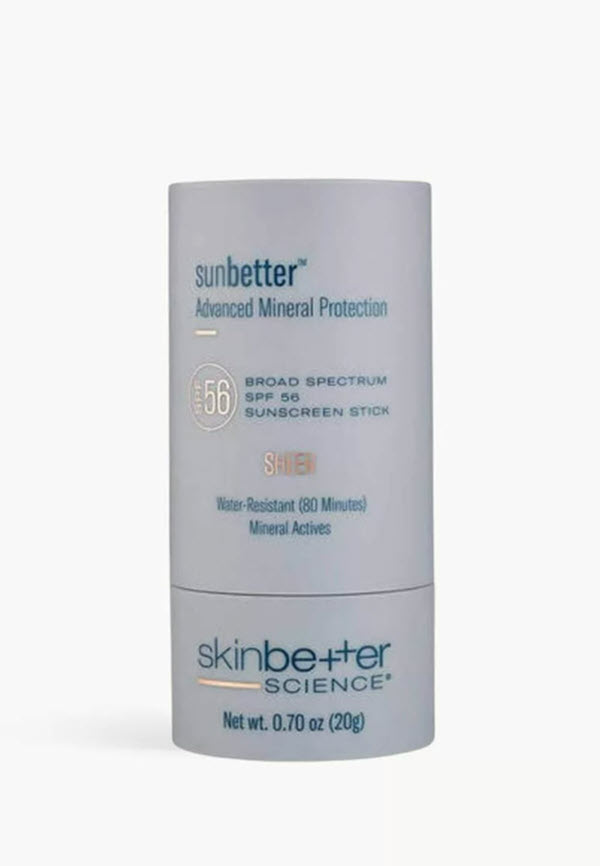
6. Consider the Sunscreen Formulation
Sunscreen products come in a variety of forms, including:
- Oils
- Lotions
- Gels
- Sprays
- Sticks
- Powders
No sunscreen formulation is better than the other. Your choice depends on personal preference and convenience of use.
Physical sunscreens are more difficult to manufacture than chemical products and come in fewer formulations. They are thicker, more tricky to spread evenly, and leave a white residue on the skin. However, the FDA recognizes only physical sunscreens – those containing zinc oxide or titanium dioxide – as generally safe and effective.
Zo Skin Health Gel Sunscreen is a broad-spectrum SPF 50 with a clear, gel-like texture that enables easy application and gives a smooth finish. It is lightweight and unscented but provides powerful water-resistant protection.
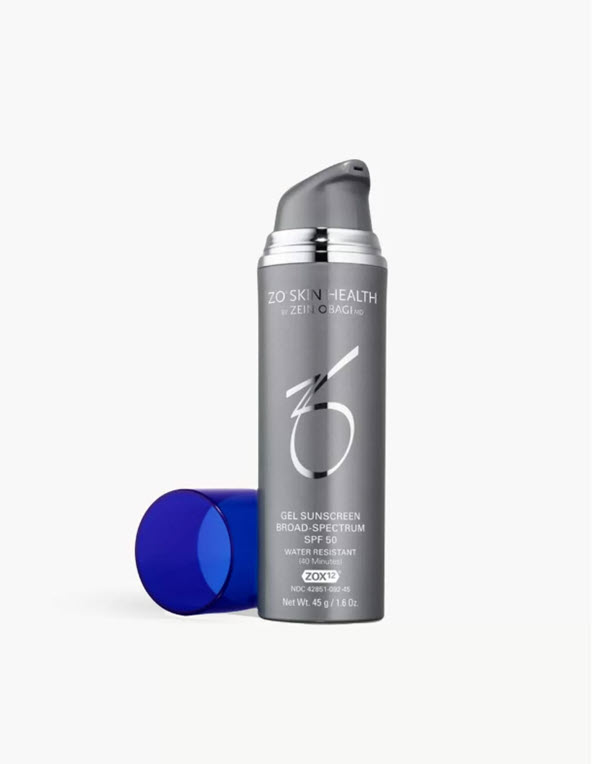
7. Opt for a Water-Resistant Sunscreen
During hot weather, we sweat more than usual, causing the sunscreen to melt off. Water-resistant sunscreens have an edge over other types of sun-blocking products because they stay on the skin while we swim or sweat. They typically last 40 or 80 minutes, so read the label carefully to know when to reapply the product.
Sunbetter Tone Smart by skinbetter is a creamy lotion sunscreen for the whole body. It provides the highest level of protection against the sun with a broad-spectrum SPF 75. It is water-resistant for 80 minutes. It also provides a hint of color, making it suitable for wearing under makeup.
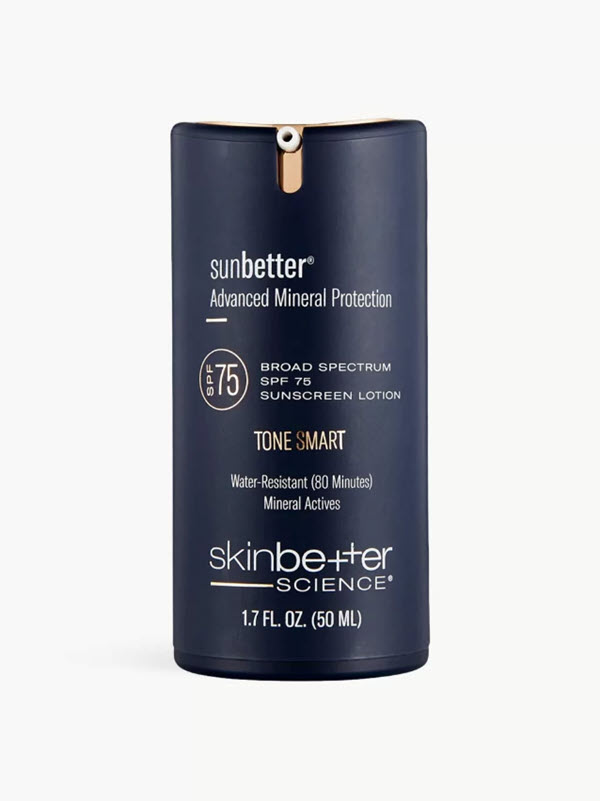
8. Use Before the Expiration Date
The effectiveness of sun-blocking ingredients diminishes with time and inadequate storage. Keep sunscreen away from heat and humidity and make sure to use it before it expires. Sunscreens generally last for three years, but some products have a shorter use period. Find your sunscreen’s “use by” date on the product label.
Conclusion
Sunscreen is the most important part of your summer skincare routine. Your face may not show signs of aging after a few months or even a few years of sun exposure. However, the harmful effects of UV rays accumulate over time.
To shield your skin and ensure you get the most out of your sun-blocking product, choose a product with broad-spectrum protection and an SPF of 30+. Don’t forget to apply the product 30 minutes before exposure and reapply regularly.


